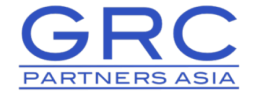To learn more about what makes GRC solutions effective, SAI360 worked with OCEG (Open Compliance Ethics Group) to conduct the 2025 GRC Maturity Survey. This survey provided a global snapshot of where organizations stand today and the differentiating factors that equate to GRC maturity.
Drawing on input from over 850 professionals (including 368 senior executives), the findings are clear: a formal strategy around the right GRC solutions is the single most powerful driver of maturity and performance, and below we’ll break down why.
The Survey
OCEG is a global nonprofit and the originator of the GRC Capability Model, which sets the standard for integrated GRC. Since 2002, OCEG has worked with over 150,000 members to advance what it calls Principled Performance, which is effectively the ability to reliably achieve objectives, address uncertainty, and act with integrity.
For this year’s research, OCEG gathered insights from across a broad range of industries, company sizes, and geographies, broken down below:
- 68% of respondents work in internal organizational roles
- Representation from a mix of governance & strategy, risk management, compliance & ethics, and audit professionals
- Global participation with strong representation from North America (32%), the Middle East & Africa (29%), Asia Pacific (19%), and Europe (13%)
This breadth of range ensures survey findings reflect a truly global picture of GRC maturity. Below, you’ll learn more about the future of risk and compliance management tools.
Key Finding 1: Strategy Changes the Game
The data confirms what many leaders using GRC solutions have observed anecdotally: strategy is imperative to multiplying impact.
- Confidence gap: 59% of organizations with a documented GRC strategy are “very confident” in their capabilities, in stark comparison to just 36% without.
- Governance advantage: 70% of strategy-led organizations believe their boards receive adequate risk and compliance information for setting objectives. Without a strategy, that figure drops to 34%.
- Maturity uplift: Strategy-driven organizations score consistently at Level 3–4 maturity, compared to an average Level 2 for those without.
What it means:
A formal strategy transforms GRC from a set of reactive processes into a proactive, integrated capability. It enables systematic planning, coordinated oversight, and measurable progress, which in turn lays the foundation for a more competitive advantage.
Key Finding 2: A Sector at a Tipping Point
The GRC field is evenly split, with 49% of organizations owning a defined strategy and 51% not.
- Those with a strategy are already reaping measurable benefits in alignment, integration and risk response, as well as increased efficiency across the board.
- Those without are constrained by ad hoc processes, siloed functions and missed opportunities for business alignment.
Did you know? “Even the most robust GRC tools will fall short without good support. Poor service can leave your team stranded when they need help most, slowing down critical compliance processes” – GRC Report
What it means:
The maturity gap is poised to widen with early movers consolidating their advantage whilst late adopters risk falling further behind, especially as regulatory complexity and technological disruption accelerate across most sectors.
Key Finding 3: The Three Critical Success Drivers
The research highlights three mutually reinforcing factors that accelerate GRC maturity:
- Regular GRC Maturity Assessments: 68% of strategy-led organizations conduct structured, enterprise-wide assessments compared to just 28% without a strategy.
- Management-Level Oversight Committees: 84% of organizations with a strategy have dedicated GRC committees, versus 41% without.
- A Documented GRC Strategy: The overarching foundation that enables both of the above and drives integration across silos in compliance.
What it means:
Organizations with all three drivers score higher across every maturity dimension. Missing even one can significantly impact the ability to coordinate, measure, and sustain meaningful improvements.
GRC Food for thought: “Unless something external changes, regulators, boards, or stakeholders demanding a better way, the vast majority of organizations will keep doing what they’ve always done. That doesn’t mean it’s working.” – GRC Report
Moving GRC Maturity Forward
Based on the survey findings, organizations should:
- Establish a Formal GRC Strategy: Secure executive sponsorship and align GRC goals to business strategy
- Embed Regular Assessments: Move from occasional, reactive evaluations to a scheduled, enterprise-wide program
- Create Oversight Committees: Formalize cross-functional governance and accountability
- Integrate Technology: Use process automation, unified data and dashboards to enhance agility
- Strengthen Culture and Communication: Clarify roles, responsibilities, and expectations at every level
Looking Ahead
Integration will continue to be a central theme over the next several years. Organizations are increasingly aligning their GRC efforts across the enterprise, leveraging formal assessments to enhance consistency and accountability. The continued adoption of automation and analytics within GRC solutions will also play an important role in driving efficiency and strategic insight. The organizations that can clearly show the value of these changes will be better positioned to sustain leadership support.
Final Thoughts on GRC Solutions
Strategy is the real differentiator in driving organizational maturity. Those that commit to a documented strategy, regular assessments, and formal oversight consistently achieve higher confidence, better integration, and stronger performance. By closing the maturity gap and building GRC into the DNA of the organization, you can better meet compliance requirements while driving lasting strategic value.
Source: This article was originally published by SAI360






